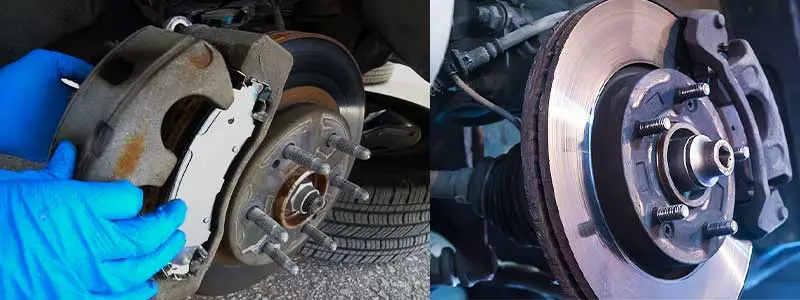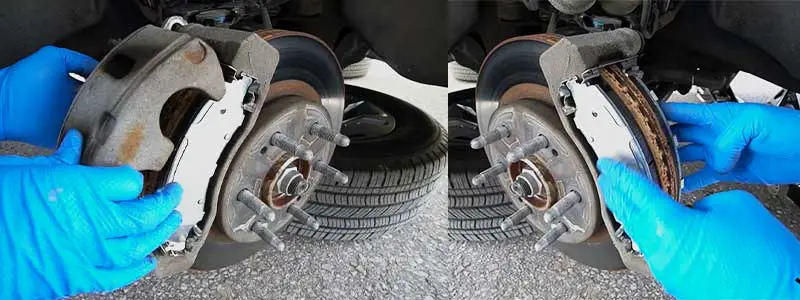How to Tell If You Need Brake Pads or Rotors?
With normal use, parts of your braking system start to wear out over time, particularly the brake pads.
Once brake pads have worn below a quarter of an inch, they need to be replaced to ensure safe operation.
The easiest way to tell if your brake pad is past the quarter inch mark is to simply look at the brake pad through the space on the wheel.
Rotor as well wear can be caused by a few variables, most notably usage. How you treat your braking system will affect your rotor’s life to great effect.
Hard stops, resting your left foot on the brake pedal, extreme stops when the brake rotors are still cold, along with the environment, can all impact your brake rotor’s health.
Driving conditions influence the durability of your brake rotors. Depending on where you live, your car is going to be exposed to different elements resulting in varying levels of corrosion, dirt, or debris.
Perhaps you do a lot of driving down gravel roads or live in a harsh climate where the roads are regularly salted to melt ice.
Chances are, you’re going to need new rotors sooner than someone with the same vehicle who lives in a mild climate with little exposure to extreme driving conditions.
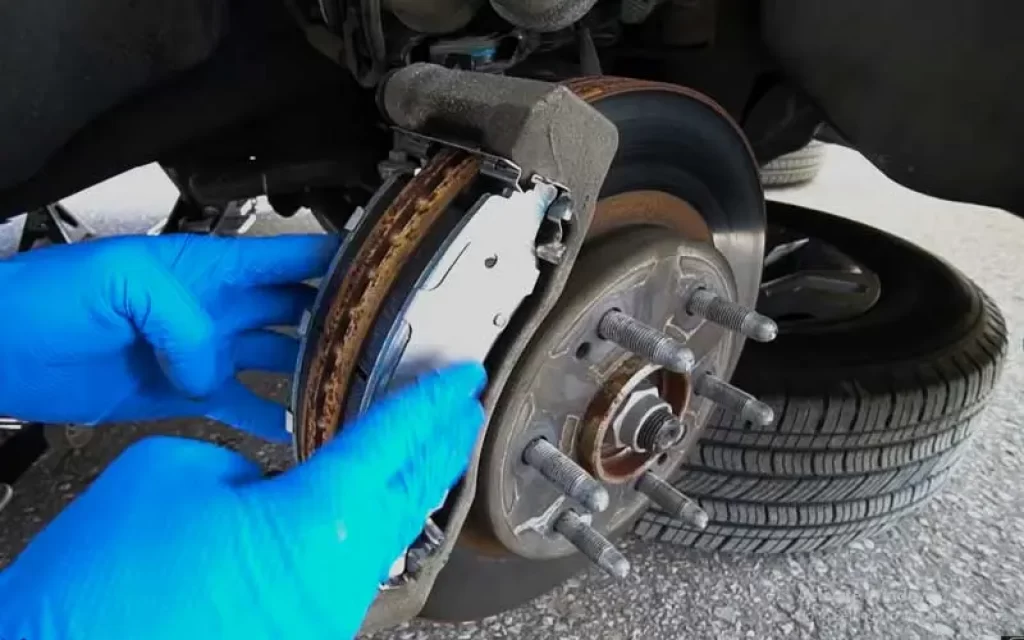
You typically have three options for brake replacement:
- replacing the brake pads
- replacing the brake pads and resurfacing the rotors
- replacing the brake pads and rotors together
Each option has its advantages. What you choose should depend on how much life your brake rotors still have in them and your budget.
Read: Brake Pad Wear Indicator
Replacing brake pads only
- If your rotors aren’t worn or damaged when you go in for brake service, you can probably get away with changing just the brake pads.
- It’s the cheapest option inthe short-term. Remember that the new pads might not fit perfectly with the older brake rotors, since these components are designed to wear down together.
- The mismatch of old and new could cause a bit of noise and vibration as the two components (pads and rotors) get used to each other.
- When fitting new brake pads against old rotors, you also run the risk of uneven wear on the pads, which could result in having to replace them again sooner than you might like.
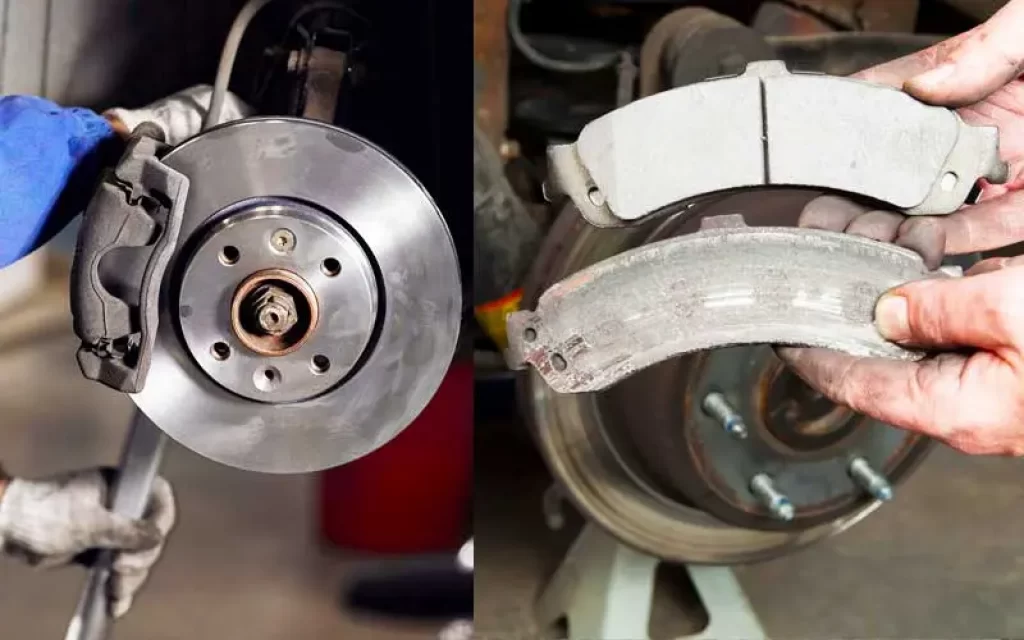
Replacing brake pads and resurfacing rotors
- If there is enough thickness left in your rotors when you go to have your brake pads replaced, some shops will offer to resurface your rotors on a machine.
- That will bring them down to a smooth surface for the new brake pads to wear against. This is used as a cost-saving mechanism against paying to have them replaced.
- While it’s cheaper, the process of machining rotors takes off layers of their surface and may cause them to warp due to their lessened ability to dissipate heat.
- While new rotors can last up to 70,000 miles, resurfaced rotors have been known to warp only 10,000-15,000 miles after machining.
- Though it isn’t always the case, you could end up back in the shop for new brakes only a few short months after having your rotors resurfaced.
- Remember that when you replace damaged rotors, you’ll probably also need new brake pads as a result of the uneven wear caused by their hitting up against the warped rotors.
Read before buy: Best Brake Bleeder Kits (Vacuum)
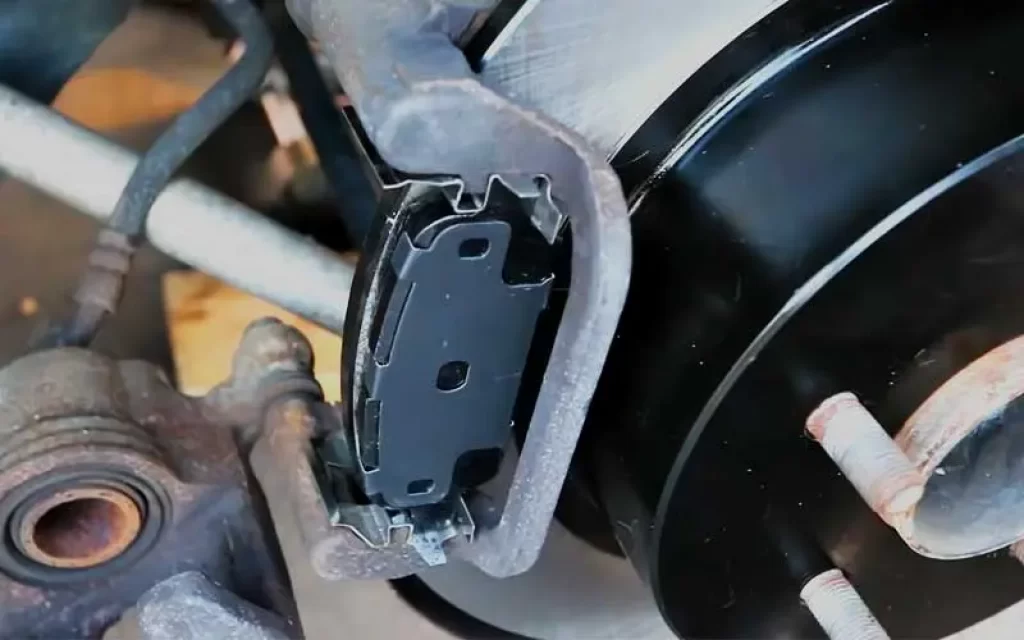
Replacing brake pads and rotors together
- While more expensive upfront, replacing pads and rotors together will help both components last longer and ultimately give you the best brake performance.
- Replacing the full brake set also tends to be safer, as there is less risk of uneven wear or warping – both of which can reduce your stopping power.
- New types of rotors are relatively affordable, especially when you factor in the cost of machining your old rotors only to replace them again at some point down the road.
- This may explain why more and more repair shops are recommending replacing rotors over resurfacing them.
Read to choose right one: Brake Caliper paint kit
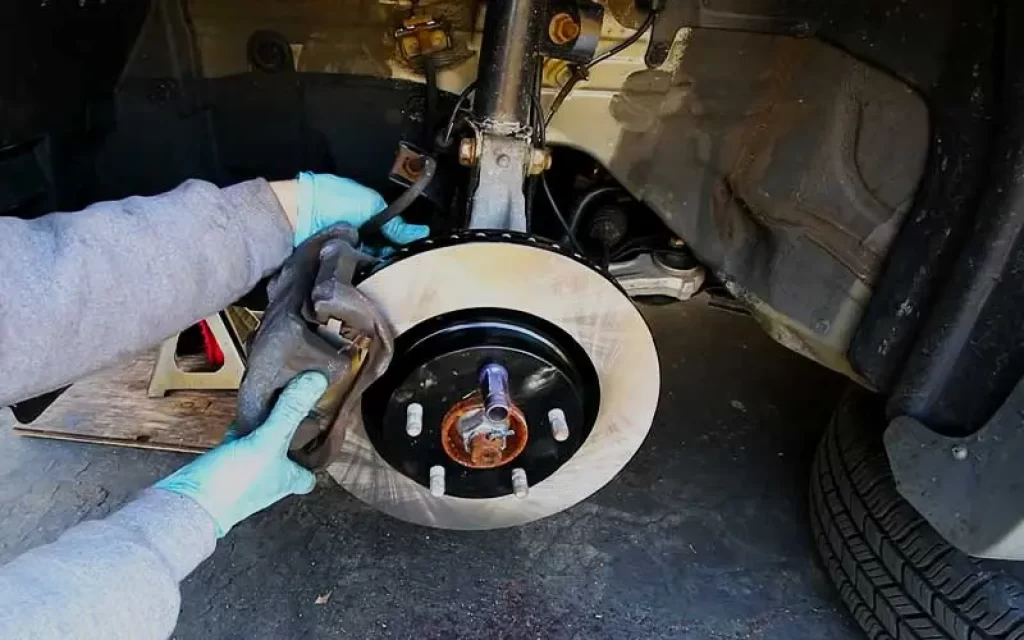
How to check if brake rotors need replacing?
Once you notice any of these 3 signs, you should get your rotors replaced immediately. Luckily, cars show symptoms when your rotors need to be replaced.
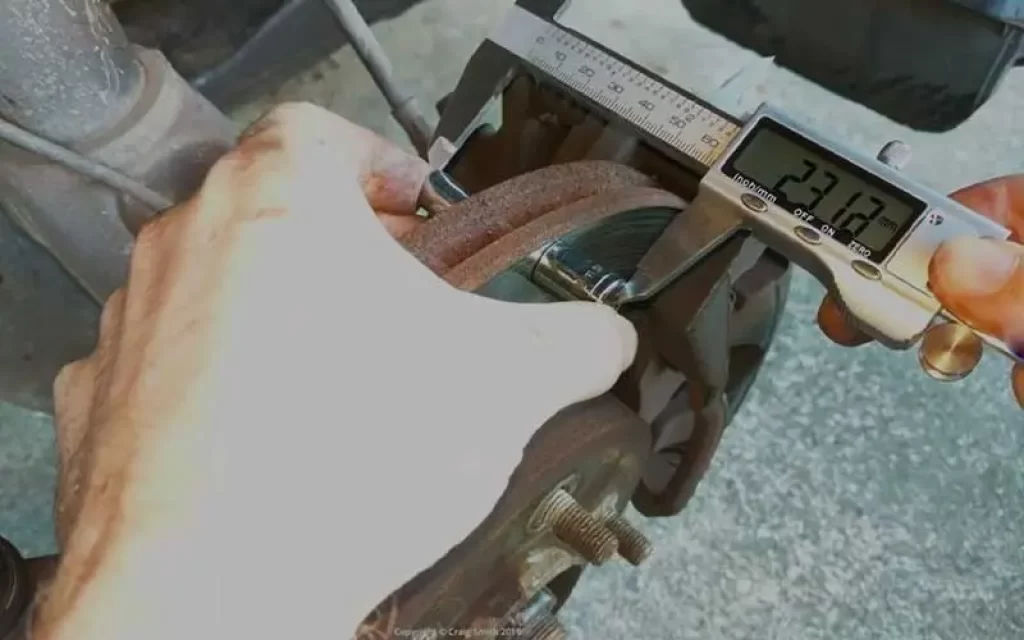
Look out for blue rotors
To check the color of your rotors, you will have to remove your tire completely unless you have a car with large wheels with limited spokes where the rotor is visible.
Use a flashlight if you have to and look for a slight blue tint on your brake rotors. Check all the rotors because while rare, not all will be equally damaged.
The cause for the blue tint is excessive heat caused by prolonged friction, especially if you live in an area with a lot of hills or sharp turns.
This slight breaking causes the caliper to press against the rotors but not hard enough where the car makes a full stop but just enough so that the vehicle slows down.
Read to know: F150 Grinding Noise When Accelerating

Look out for grooves or scoring on the rotors
Another sign of damage to your rotors are grooves and scoring on the discs. Again to inspect, you will need to take your tire off.
Unfortunately, because some areas may be damaged and others not, we recommend taking the tire off completely even if you have large wheels with a few spokes.
Once you notice any grooves or scoring on the rotors, go to your trusted auto service center and get them checked out!
Read to solve: How to Get Air Out of Brake Lines

Listen for a high pitched screeching or squeaking sound
When you hear this high-pitched squeal while braking, it almost certainly means that your rotors need to be replaced, or that there is something wrong with your brakes.
You’ll hear this sound during long brakes, not when you need to brake quickly, but as you lift your foot off the pedal, you may hear another slight squeak.
This time it will be a more relaxed and airy screech or a screech with a “whoosh” if you will. Don’t prolong your visit to your trusted auto service center.
You may also hear this sound while turning. Again this may mean your brake rotors need to be replaced, but it could also signify an alignment issue.
Read Also: Air in Brake Line Symptoms
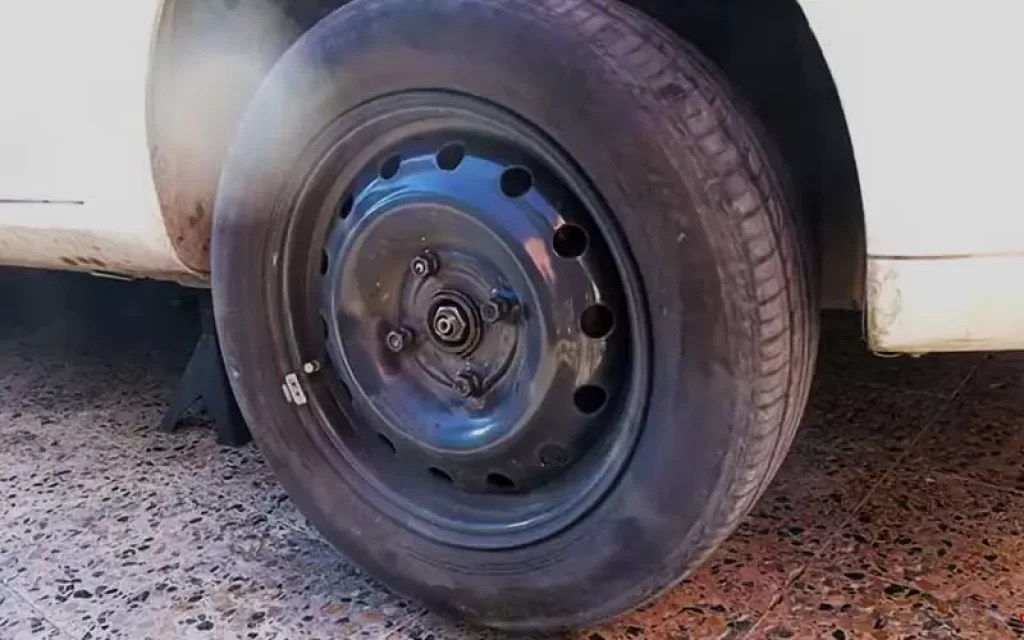
Conclusions
Many professionals and mechanics would recommend that both elements of the brake system be replaced at the same time.
Besides maintenance efficiency, replacing both brake pads and rotors can increase the performance and longevity of your vehicle’s braking system.
In the long term, it will be cheaper and much safer to have it replaced all together. We always suggest you ask an experienced car mechanic that you trust.

